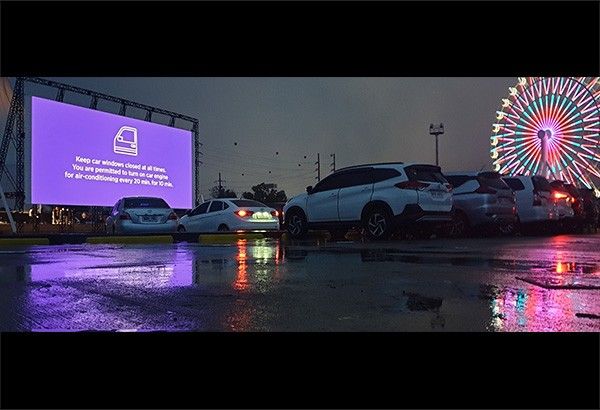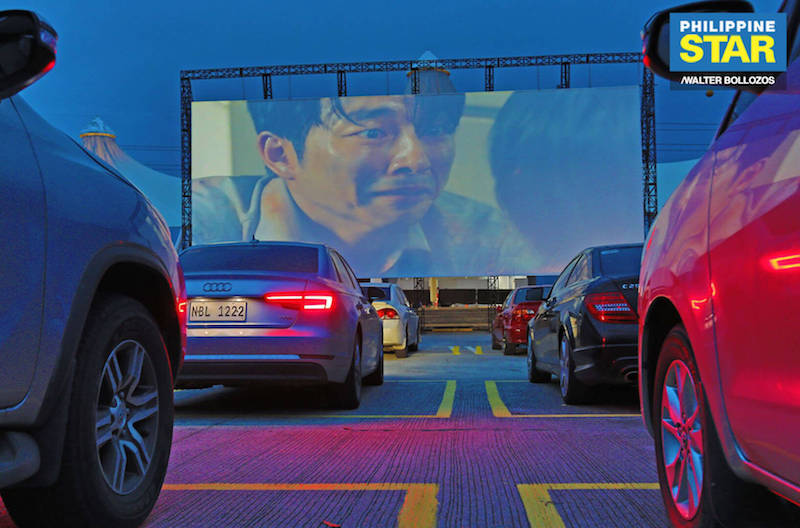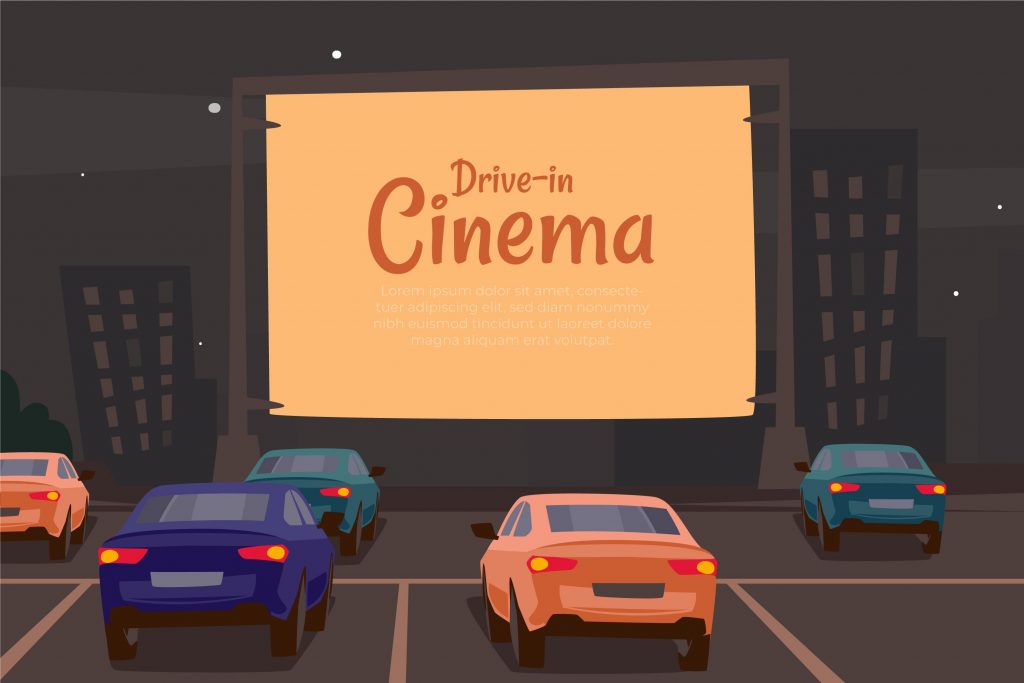Without a doubt, the COVID-19 pandemic has brought sudden changes and adjustments to our way of life. From the usual Sunday restaurant food trips to the movie nights, everything were instantly cancelled. So, for businesses to continue operating, they had to innovate and deliver new strategies for the people. One of these is reliving a classic fun activity that our grandparents loved to do, watching movies at drive-in cinemas.
Recently, SM Entertainment opened the first ever drive-in cinemas in the country. This is in the hopes of bringing back the movie nights and hangouts that everyone missed. Now, more and more people get to watch their favorite movies at the comfort of their car seats. So, can this be considered the future of safe cinema trips? Are we gonna ditch the indoor theaters for safety reasons? Or is this just a phase while a pandemic is at large? We’ll let you decide on this one.
History of Drive-in Cinemas

The well-loved and patronized indoor cinemas have long existed even before its drive-in version. However, watching a movie at an outdoor theater while in your car made Friday nights with family and friends more special. You probably only heard a few snippets of this cinema experience. So, we’ll give you a little story time as to where this all began.
Once upon a time, drive-in cinemas are built way back in 1910s but it was only in 1933 where the first patented drive-in was opened. The man that paved the way for such unique movie experience was Richard Hollingshead. A movie fan and sales manager at Whiz Auto Products (his father’s company), Richard was inspired by the struggles of her mother. It is not a new story that traditional theaters are often uncomfortable especially the way the seats are designed. Considering the uneasiness that her mother had to endure, Richard came up with a brilliant idea.
He thought of a theater in an open-air venue where people can watch at the comfort of their own car seats. To try out what he had in mind, he experimented the cinema set up in his driveway. From using the 1982 Kodak projector on the hood of his car, hanging a screen in trees, to placing a radio for sound, he made sure that his idea is doable. Furthermore, Richard even came up with strategies to address any form of inclement weather that may affect the viewing experience of the patrons. He also devised a car arrangement plan to make sure that every vehicle will be able to have a good view of the screen.
Rise of Drive-in Cinemas
After his patent was overturned in the 1949, more drive-in cinemas popped up across the United States. One of the largest business that adapted this set up was the All-Weather Drive-In of Copiague, New York. They were able to house on a 28 acre lot, 2,500 cars, a kids playground, and restaurant. They got it all, don’t they?
Because of the unique experience that drive-in cinemas offer, it reached its peak after the World War II. With over 5,000 theaters across America, families, friends, and lovers who seek privacy patronized this kind of set up.
Decline of Drive-in Cinemas

Everything seemed stable with this kind of business, right? But did you ever wonder why while growing up, you have not seen or heard about drive-in cinemas? Like they just suddenly disappeared as time passed by.
Technological Advancements
The thing is, technology is continuously developing. Improvements in the home entertainment from colored television to cable TV, VCRs, and video rental happened. With more options given to people, the drive-in cinemas that were once jam packed with cars and patrons suddenly became just an empty piece of land. Also, as the television industry was booming, people preferred watching feature shows and talk shows rather than films.
Real Estate
Moreover, owners had a hard time holding on to this kind of business. The real estate pricing suddenly increased especially in the suburban areas. This made renting or maintaining the land very expensive and impractical for the business owners. Some would just operate on weekends where more people will likely come by while there are those that just decided to close their doors for good. Instead of operating a business that have more expenses rather than revenue, they just decided to sell their land to developers of malls or multi-building complexes.
Weather
Another factor that prompted the decline of drive-in cinemas were the adverse weather such as typhoons, hurricanes, and such. Since going out seemed like a life threatening action to do, movies were cancelled or less people attended during screenings.
Although most drive-in cinemas have decided to cease operations, there are still those that remained open. And now, what seemed to be a dying business suddenly became alive because of the current situation that we are facing. Most parts of the world especially in the United States, drive-in cinemas are again booming, with more people seeking a safe and socially distanced entertainment. Even here in the Philippines, this kind of movie set up is now available for everyone to experience.
Philippines’ First Ever Drive-in Cinemas

A news recently broke out which prompted Filipinos to feel excited and alive (again) after 6 months of being contained in their homes. You probably guessed this by now. But for the sake of those who may not be informed, the first-ever drive-in cinemas in the country are already up and going.
SM Cinema, the largest cinema exhibitor in the country, launched its newest out-of-home entertainment experience, the “SM Cinema Drive-in: Movies at Sundown”. Sounds sosyal and classic, right? Reading this may already prompt you to call your best friend who has a car. You know, so you can finally see that Train to Busan 2 in a big screen.
Considering the safety of everyone while still being able to unwind and chill for a few hours, SM Cinema initiated a #SafeAndFunMovieWatching crusade. It first opened its doors to the Kapampangans and nearby provinces at the SM City Pampanga Ampitheater last July 31. Due to public demand and to reach the people in the Metro, SM Cinema’s “Movies at Sundown is also launched at the SM Mall of Asia Concert Grounds.
The Experience

Before driving your cars to either SM Pampanga or MOA, get to know what kind of movie experience awaits you.
For a ticket price of Php 400.00 per person, you will get to savor a “new” kind of cinematic approach at the comfort of your own car. The price seems eh high compared to what we were used to. How about a question for you? Do you think watching a movie without snacks is the same feeling? You said no, right? And that’s actually true! Movies are good, no wonder. But movie+snacks, that’s what you call a total movie experience. Going back, your Php 400.00 is not just for the movie ticket. You will also receive a regular sized popcorn, bottled water, and beef franks from SnackTime! A total movie experience, right?
Upon arriving at the location, traffic marshalls will guide you to your parking spot. Once everything is settled, you’ll be able to catch your choice of movie on a 20m x 8m screen raised 3-feet above the ground. In addition, you will be asked to tune in to a specific frequency on your car’s radio since the audio of the film will be broadcasted straight into your radio.
Schedule and Tickets
Moreover, both cinemas as of the moment only caters to a “one film per day” schedule. The time that the movie will be shown is consistently at 6:45 in the evening. You can catch Train to Busan 2 or Unhinged at SM Pampanga from Thursdays to Sundays. The same choice of movies (for now) is also available at SM MOA from Wednesdays to Sundays.
Tickets are sold via www.smtickets.com only. You should also book your tickets in advanced since there are no selling of tickets in the venue. Movie goers are also advised to arrive 30 minutes earlier than their scheduled time.
#SafeAndFunMovieWatching

Watching at your own car seems the only safety measures SM drive-in cinemas required, right? But this is not the case. The largest cinema exhibitor is still following the safety guidelines set by the IATF.
Attendees that are aged 21 to 59 years old are the only ones allowed to enter the premises. Furthermore, all guests will have to wear their masks all the time (even inside the vehicle) and practice social distancing. Moreover, only (2) persons per car are allowed inside with a maximum of (4) persons in the vehicle.
Advantages of Drive-in Cinemas

Come to think of it, a drive-in cinema experience gives you a lot of advantages. It does not only bring back the good ole classic days but it also considers your privacy. Compared to the usual theaters where tens or hundreds of people are watching together with you, drive-in cinemas only limit the number of people in each car. Not to be mistaken though, this is not the kind of privacy that you might be thinking.
Rather, it gives you a sense of peace from movie goers who like to talk while inside the cinema. Or those parents who bring their kids only for them to create disturbing noises. Of course, the classic patrons who cannot get away from their phones even when watching a movie. These disturbances can really ruin your movie experience. But these and more can be avoided if you know the people you are with when watching movies.
Another good thing about drive-in cinemas is how comfortable your seat and surroundings can be. Almost all usual cinemas have uncomfortable seats and are warm sometimes. Imagine spending a few hours sitting on a chair that only hurts your back and buttocks. Instead of focusing on that action packed movie, you just keep on twisting to find a comfortable position. But for drive-in cinemas, these are not considered problems. Since you can recline your chair and adjust the temperature of your own air-con, you will be comfortable all throughout the duration of the movie.
Disadvantages of Drive-in Cinemas

Drive-in cinemas seem promising and may last longer, right? But environmentalists say otherwise. Driving cars and keeping its engines on for a couple of hours is not a sustainable solution for a safety cinema experience. Cars are one of the greatest contributor of carbon dioxide emissions which as we all know hurts mother Earth. The different gases and elements that cars exhaust cause global warming, air pollution, and even hurts the health of people.
Just imagine the amount of smog, carbon monoxide, and other gases that is emitted by these vehicles while being parked. We are not talking about one or two vehicles here, but hundreds all at the same time.
Another disadvantage of drive-in cinemas is the unpredictable inclement weather. You can still probably watch the movie while raindrops are pouring on your car’s windshield but it would definitely be uncomfortable. You can associate that experience when watching a pirated copy of a movie with all the glitches and unwanted elements. But if you are the type to believe that the rain will only pass and the sun will come out again, then good luck on your waiting time.
When you say “let’s go to the movies”, this can mean now as “let’s watch at a drive-in cinema”. This classic movie experience is definitely something that most of us would like to encounter even just once. Who wouldn’t want to go out and unwind, right? However, it may take some time before everyone shifts to this kind of cinematic experience. It’s not totally new since it has long existed before. But somehow many of us are still hoping that the theaters that were always full of people and noise will be back as soon as possible.

